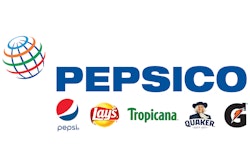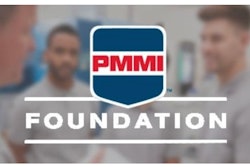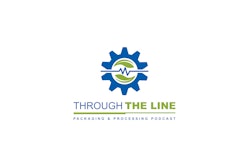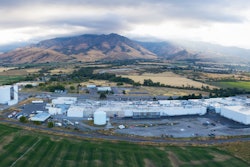PMMI’s ANSI B155.1 2023 Safety Requirements for Packaging and Processing Machinery standard helps mitigate risk for packaging and processing companies. On this episode Bruce Main joins the podcasts to discuss the latest update to the PMMI standard, but not before he breaks down exactly what the difference is between regulations like edicts from OSHA or the EU and standards like the aforementioned ANSI B155.1.
To subscribe, rate, review, and find more unPACKED podcast episodes, visit pmmi.org/podcast or find us on Apple Podcasts, Spotify, iHeart Radio, or wherever you listen to your podcasts.
Sean Riley:
So with all the fancy introductions out of the way, welcome to the podcast, Bruce.
Bruce Main:
Thanks very much, Sean.
Sean Riley:
The pleasures all ours. I think this is your second time we've had you on here, but just to clear it up for anyone that might not have been listening the first time, and shame on them, there's a lot of confusion around the word standards, and it's often used as this broad umbrella term. It sometimes is thought to be synonymous with regulations, but I don't know that it really is. So could you kick this off by providing some clarity in terms of the terminology that we're using here, and what OEMs should know when referencing those terms?
Bruce Main:
Regulations are typically based in law, they're requirements based on law. You can see that in the OSHA requirements, as well as the European regulations. Standards tend to be voluntary consensus standards that are developed without the benefit of a law, so they are voluntary. It's pretty common for people to refer to them without the distinction, so it can be confusing, but typically, the regulations have a law behind them in some form and the standards are usually voluntary.
Sean Riley:
Okay. I mean, that makes sense. Then I guess with that in mind, why are standards so important?
Bruce Main:
Well, they're important because even though there's not a legal requirement to follow them, in a product's liability claim, the standard is going to be the measure against which the jury will determine whether your machine is safe or unsafe or safe enough. It's also the case that if you're in an OSHA citation as a machine user, one of the things that we often do to help defend an employer is to use the industry standards because they tend to be more current than the OSHA requirements.
Sean Riley:
Interesting. Then I guess using other terms that I know that come up often, could you touch on the costs of being compliant, compliance versus non-compliance?
Bruce Main:
Sure. Part of it is if you're a machine builder, the cost of compliance often comes because your customer is writing in the requirements for what you need to do. If you don't comply with those, you're going to have problems in retrofit work or even perhaps having to build a new machine.
If you have a machine that's involved in an incident and somebody gets hurt, then we'd be involved in a product's liability aspects. Here, the cost can be both out-of-pocket, but also more importantly, management time in terms of dealing with a potential litigation case, and developing and obtaining the documentation on the machine design. So when you get into the ideas of compliance, often it's not just the cost to, say, develop a machine that complies with the standards, but the costs associated with the indirect items can be really significant.
Sean Riley:
Yeah, absolutely. I can imagine. So could you, I guess, provide some insight then into what the core standards are that are going to be relevant to our audience, the packaging and processing industry? And I guess in particular discuss the importance of risk assessment. I know it's a term that I hear a lot, but I think people don't necessarily understand just how vital and how important that is. And also how PackSafe... I guess it's a bunch of questions I'm throwing at you, but I know PackSafe is software that aids in this process for risk assessment. I guess if you could just tell us the standards that are relevant to packaging and processing and then the importance of risk assessment.
Bruce Main:
Certainly. The primary standard that packaging and processing machinery builders and users need to pay attention to is it's the ANSI B155.1. That's a standard written by PMMI and the committee that works there. That is the safety requirements for processing and packaging machinery. Now, it's what's called a type A and type C standard. It's kind of a hybrid. It contains the process you need to go through to develop and use machinery, but it also includes some specific requirements. Now, the risk assessment is a key part of the standards in clause six of the standard. Clause four and clause five are the responsibilities and the requirements within the standard. This is a key area that we use in litigation, as well as in discussions as to who's responsible for, whether it's the machine user or the machine supplier.
Now, the risk assessment process is a central part of the standard, and clause six talks about how you should go through the risk assessment process and apply it. It is critical because the key elements of the risk assessment process are identifying hazards, assessing risk, reducing risk to an acceptable level, documenting results and following up and making sure you did what you said you were going to do. Of those five parts, the most important pieces are identifying hazards and reducing risk, the first and the third. That's because if you don't identify a hazard, you can't address it and reducing risk is where you get the value. So once we've identified a hazard, let's reduce the risk to an acceptable level. The B155.1 standard identifies these pieces, helps guide you through the process. There's a lot of helpful information in the annexes about how to go about doing this. So that's the B155.1 standard and it's written around the risk assessment process.
The standard itself refers to other documents, other standards that you need to be aware of, one of which is ANSI B11.19, and that's safety requirements for risk reduction measures or safeguarding. So if you're going to use a guard or if you're going to use a light curtain or two hand controls or a hold run device, the requirements for those are all in B11.19 and B155.1 has what's called a normative reference to the B11.19 standard. So there are requirements under 155. We just didn't try to rewrite B11.19, we're just referring to it.
Sean Riley:
Understandable. And how exactly can PackSafe... I know that's a software, how does that tool sort of aid in this process?
Bruce Main:
The process that's described in B155.1 on the risk assessment process, PackSafe is a tool that we developed to guide people through that process as well. So you can use PackSafe to help identify hazards using a task-based or hazard-based approach. It does a checklist format that helps you build out a risk assessment for a machine. It guides you through the risk reduction effort, so assessing risk and doing risk reduction, and also includes the control system assessment. So identifying what level of reliability is required for different controls if you're using a control system, which most packaging and processing machine we are. So it's a pretty cool tool. If you're serious about doing risk assessment, you might want to take a look at it. It's certainly going to save you a fair amount of time if you have to do more than one of these, but it's a tool like anything else. It's only a tool.
Sean Riley:
Is that going to help machine builders sort of determine what standards to apply to their projects?
Bruce Main:
No. I mean, it's not going to guide you on what standards you need, but it's going to help you identify the hazards and the risk reduction measures that are applicable to your application. So it's not an expert system, it's not intelligent, so the human computer unit interface is pretty critical because you still have to know a little bit about machine design to make this work. For instance, you can identify a crushing hazard that could kill somebody and then turn around and say, yeah, it's really bad, but we're going to put a warning label on and that's all we're going to do. That's really not going to get you to an acceptable risk, but the software's not going to say, no, you can't do that.
Sean Riley:
Yeah, completely understandable now that you explain it that way. So I guess the reason that we're having this podcast is to discuss this new white paper that was put together. I guess, could you give us the reason behind developing the impact of global and local standards on OEM and suppliers white paper and walk us through how this white paper can be a resource for machine builders and the overall industry?
Bruce Main:
Certainly, certainly. So we put the paper together because there was interest in communicating more about what the standards contain and why they are important. One of the things we noticed was that the fact that PMMI is putting a lot of time and effort and resources into developing standards for the industry, but the awareness of some folks about these standards and why they're important was a little bit lacking. So we thought about putting this together as a white paper to talk about some of the key concepts, both in the costs as well as the benefits of applying global standards. B155.1 is a ANTSI standard, it's a US standard, but there are also a lot of content that is harmonized with international requirements where there's ISO standards as well, but a lot of the content is what's called harmonized or about the same, not necessarily identical, to help machinery builders build to one standard and ship it anywhere in the world.
Sean Riley:
Interesting. So that might lead into the next question I was thinking. Can this white paper be used by OEMs or some of these other tools to then be passed on as a resource for their customers and potential customers?
Bruce Main:
Yes, it can. In fact, we would encourage folks to do so. There's no cost to this. The white paper puts this in context of what standards apply and why are they important, and how does the process work so that those may not be as familiar with these concepts and the content can have a better handle on what's going on.
Sean Riley:
Well, that's exactly what I was looking for. Thank you so much, Bruce, for taking time out of what I know is a busy schedule to come on here and walk us through standards and this new white paper that came out from PMMI.
Bruce Main:
Sean, I'm happy to help and if you got further questions, just let me know.
Sean Riley:
Thanks.






















